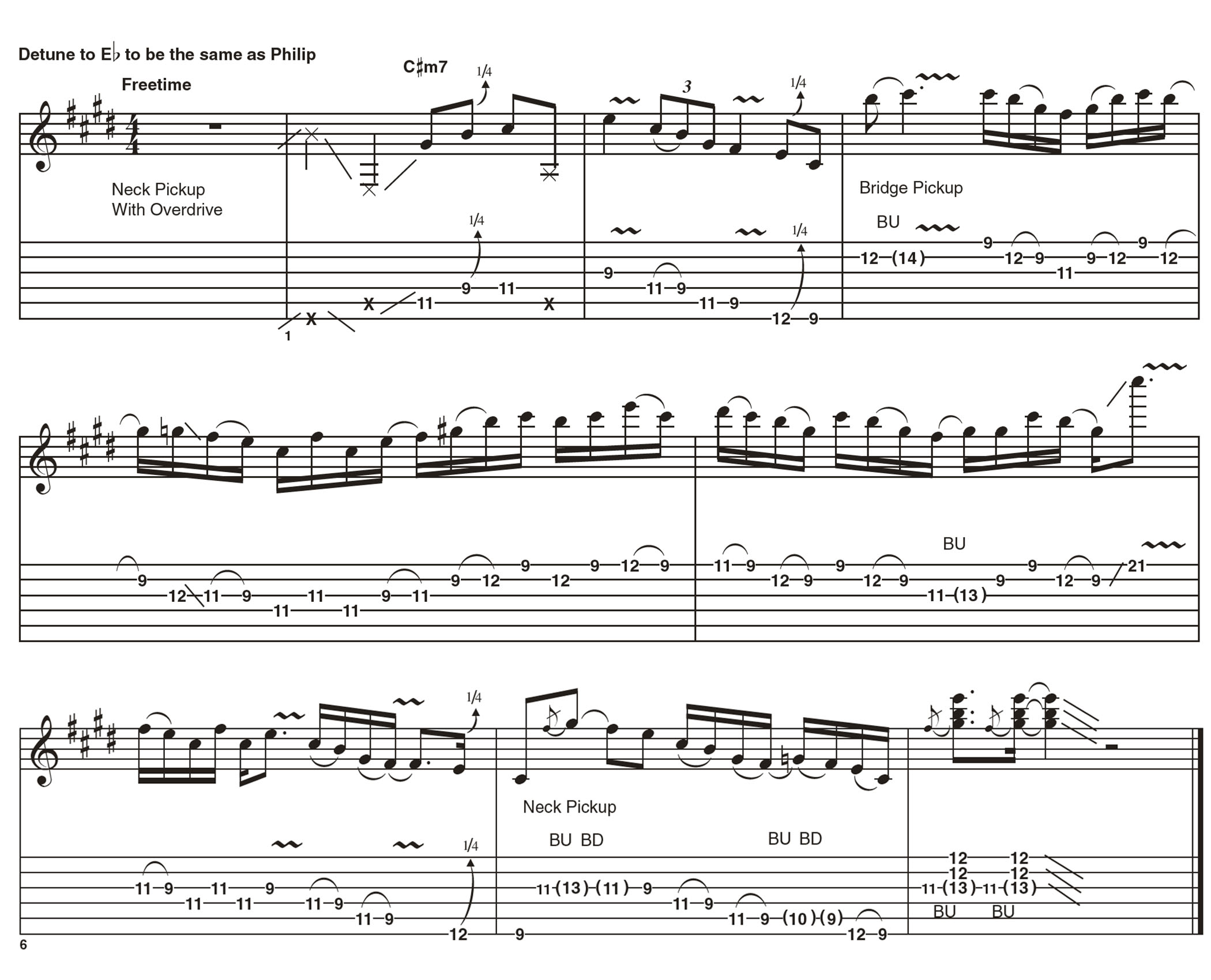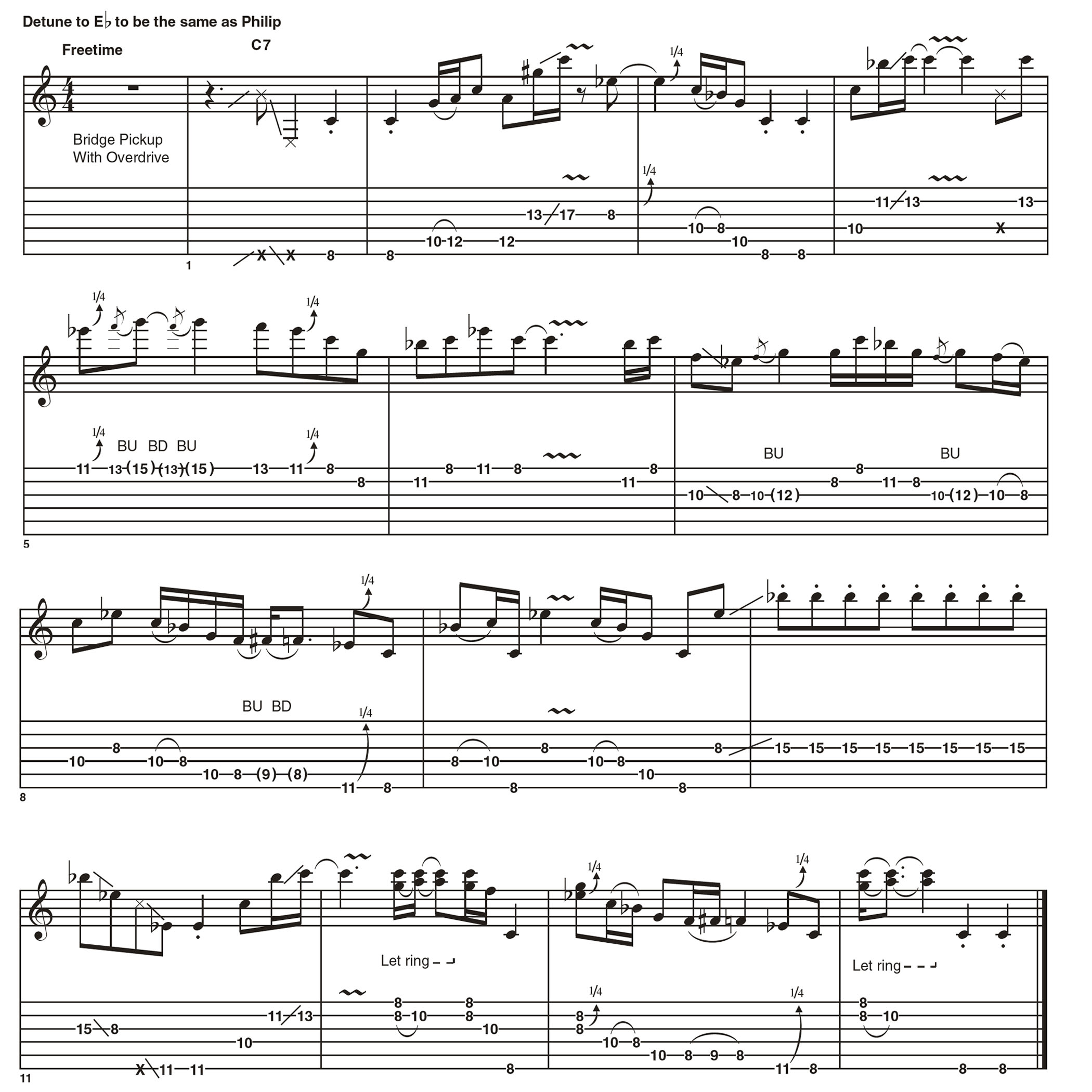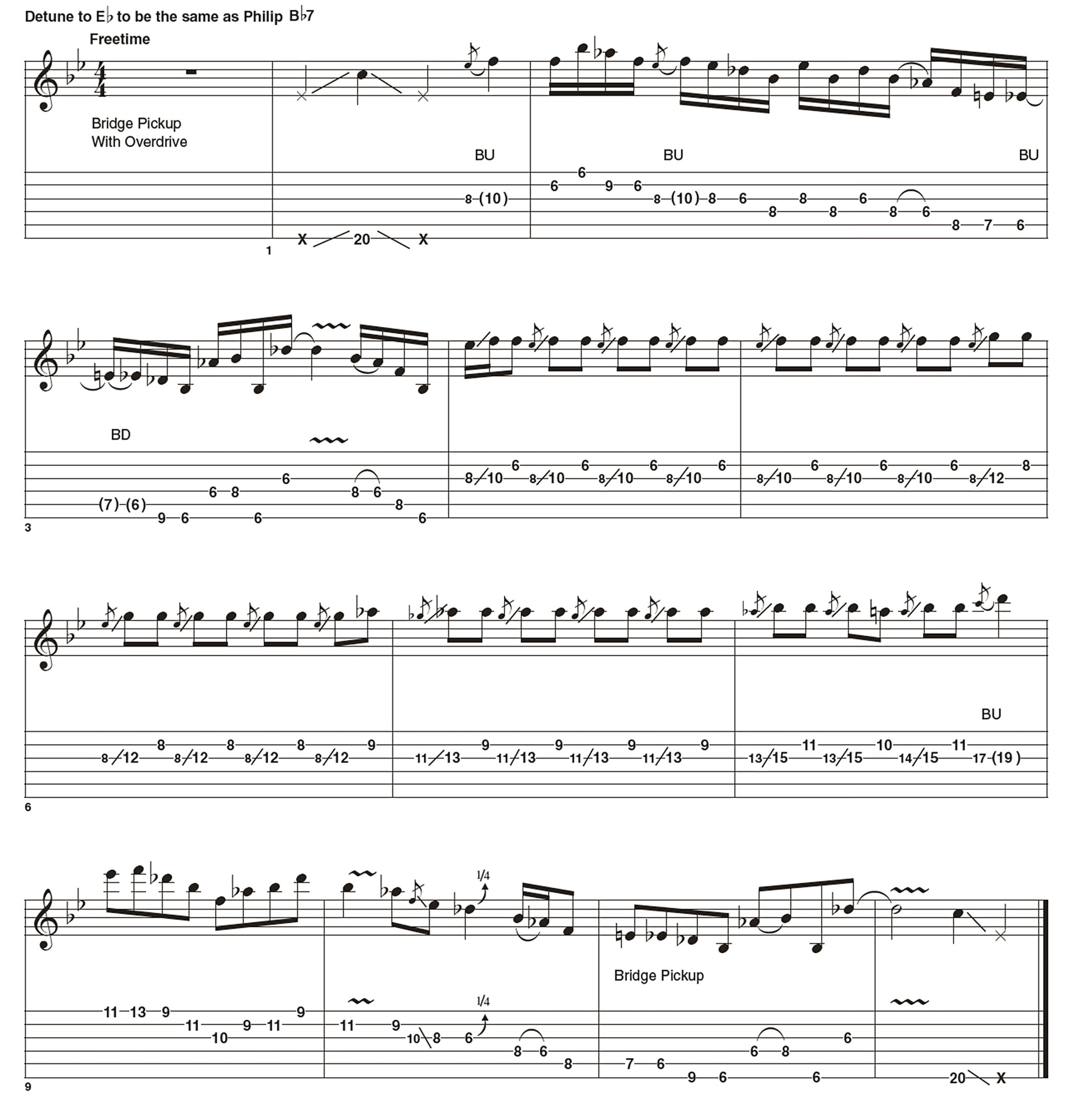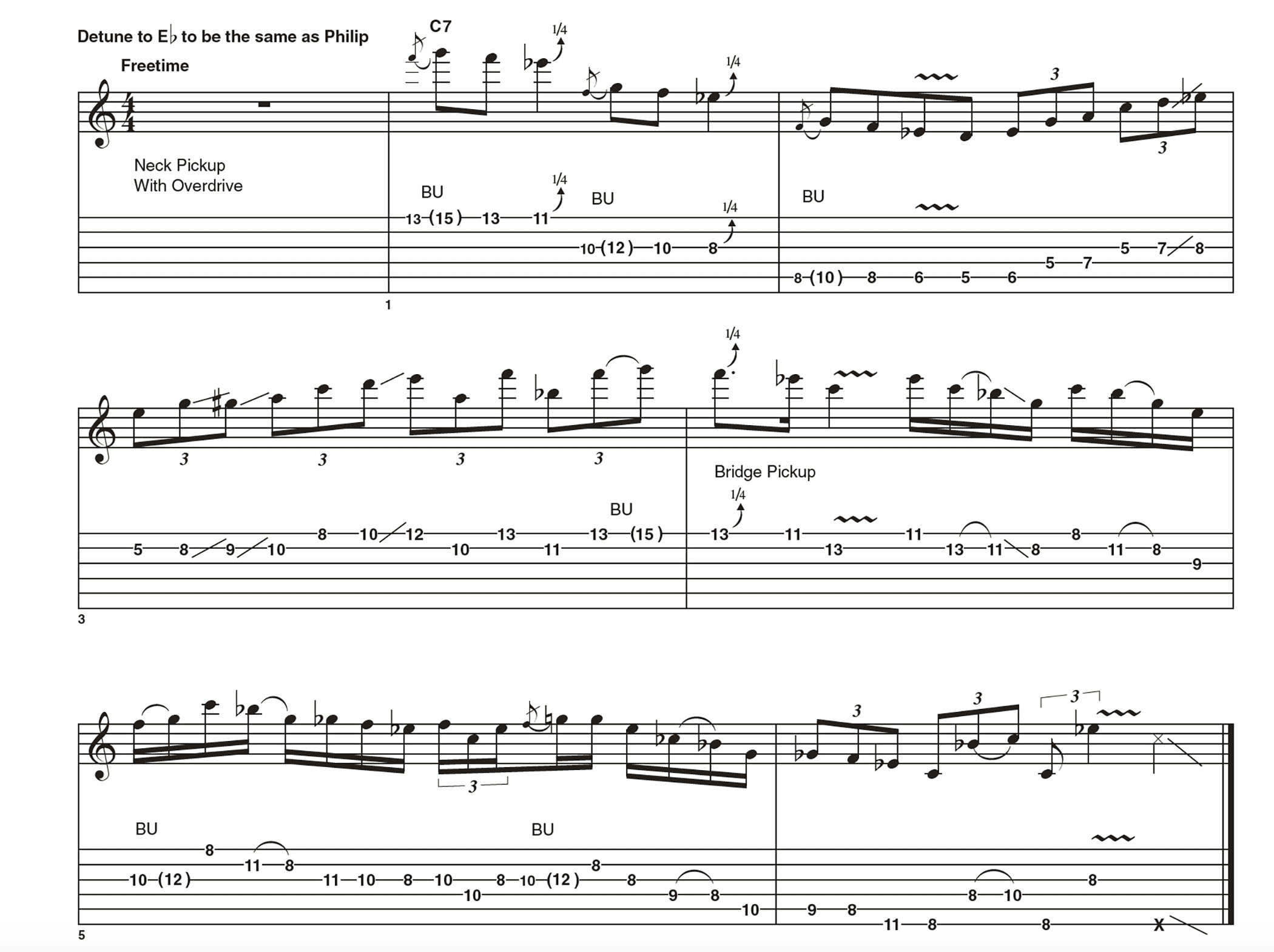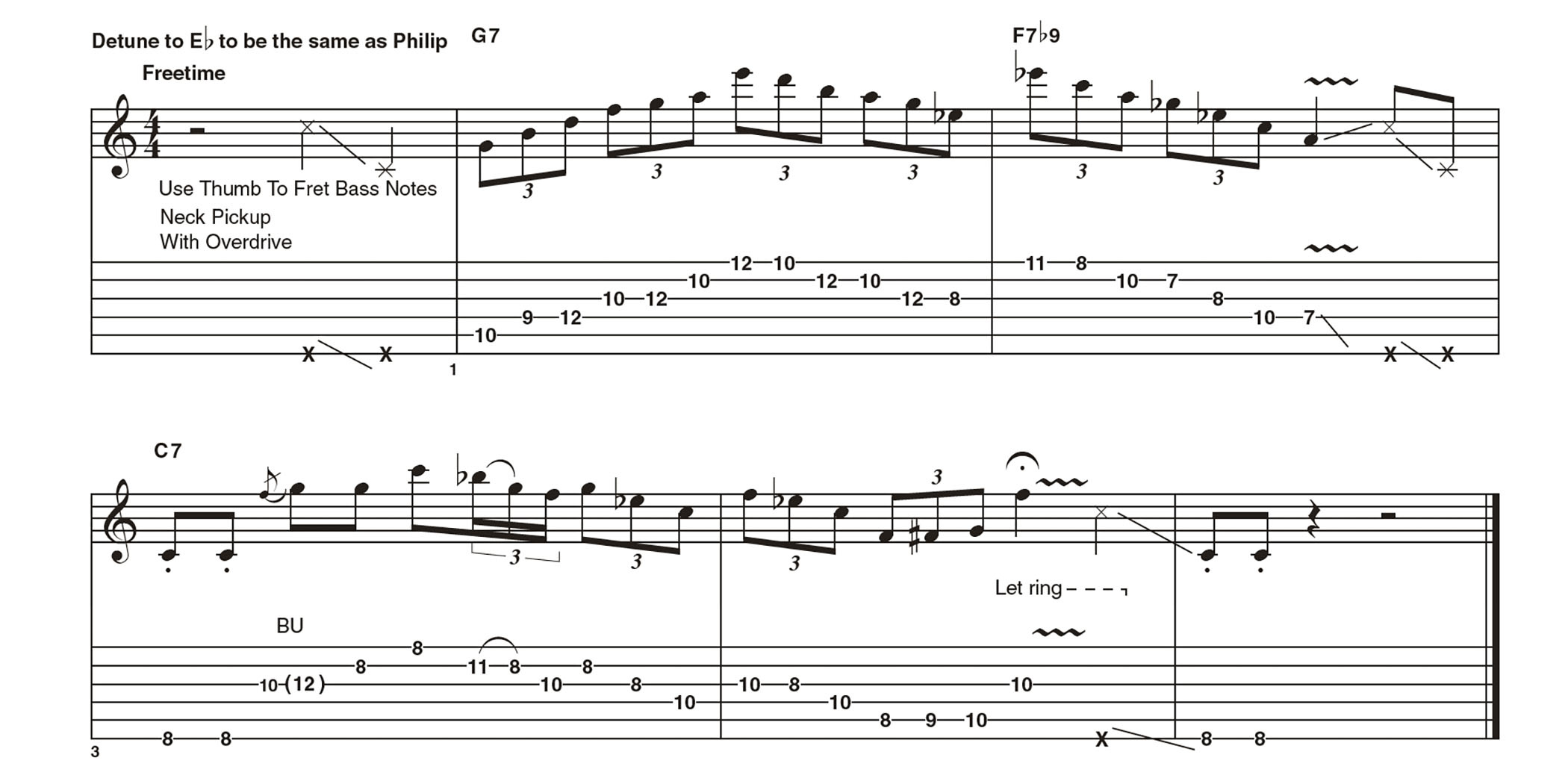From “vicious” lines inspired by Stevie Ray Vaughan to ice-cold leads in the style of Albert Collins, Philip Sayce channels the blues licks of the greats – and his masterclass will supercharge your pentatonic solos
The Canadian maestro is your instructor today, and for this lesson you're going to be digging deep for some Texas sizzle and red-hot pentatonic turnarounds
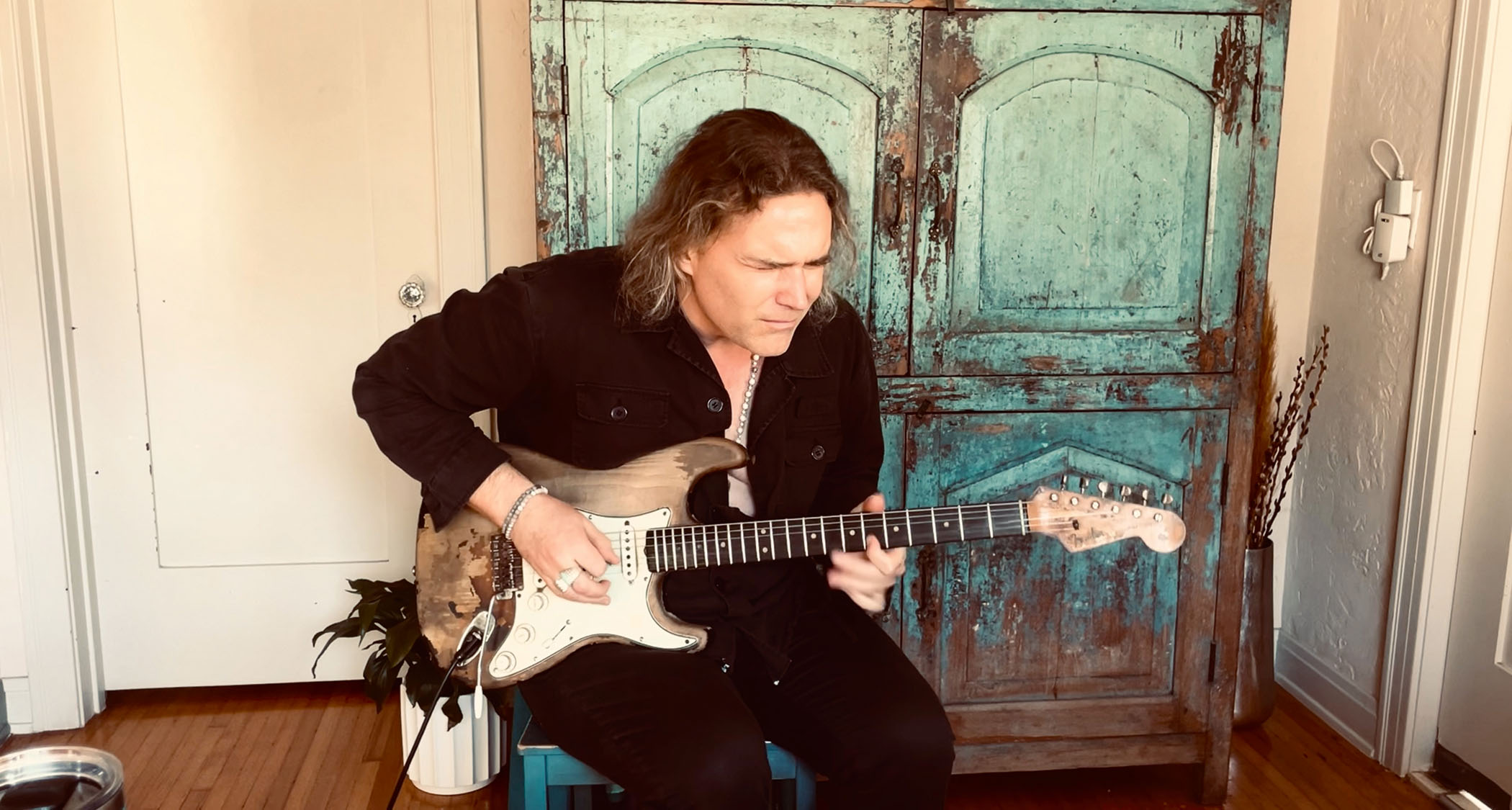
It’s with immense pleasure that we welcome back Canadian blues-rock maestro Philip Sayce for another fast-paced video masterclass.
Philip has recorded 10 albums as bandleader and forged a reputation as a superb player within the modern blues vernacular. His playing is fast and fiery, but always imbued with taste and a reverence to those that came before.
The first thing of note is that Philip is in Eb tuning for this video, so his strings are de-tuned by a semitone (Eb-Ab-Db-Gb-Bb-Eb). However, to keep things simple we have notated the fingerings as they appear on screen, so the notation here is in standard E tuning. But if you tune your guitar down and play along with the tab and notation everything will marry up like magic.
For his performance, Philip demonstrates the licks in free time, so there’s no backing track or click used. To keep things simple, 4/4 time is shown with all the rhythms being as simple as possible to navigate. So what’s notated here is a very close and logical approximation of what he has played.
Philip treats us to six licks constructed from quite long phrases. All six examples are based around various tonalities including guitar-friendly keys like E, C and A. There is one example in Bb, which is often favoured in jazz, but everyone should make themselves familiar with it too.
While the key changes keep us on our toes, the go-to scale choices and vocabulary remain similar for each lick. Philip skilfully combines the major and minor pentatonic scales with some tasty colour tones brought in here and there.
Philip skilfully combines the major and minor pentatonic scales with some tasty colour tones
As the licks are performed without a backing track there’s no specific harmonic context, so we have written in the chord type that’s implied. It’s worth noting that it’s common practice in the world of blues-rock to mix major and minor pentatonic scales over the dominant 7 chord.
All the latest guitar news, interviews, lessons, reviews, deals and more, direct to your inbox!
Everyone from B.B. King (probably the master at doing this), to Eric Clapton, Stevie Ray Vaughan, Buddy Guy and many of the other blues greats have made it part of their approach. Unsurprisingly, Philip is also more than adept at using all the best-known blues-rock guitar techniques such as string bending (sometimes big ones), finger slides, and powerful finger vibrato.
The main influences at play here are Jeff Healey, Stevie Ray Vaughan and Albert Collins, and Philip references these players as we go. In true SRV and Hendrix style Philip also uses the thumb of his fretting hand to fret the notes on the sixth string.
This frees up the fingers to play notes and chords that would usually be somewhat awkward. For instance, it would have been all but impossible for Hendrix to execute the beautiful chord embellishments in Little Wing any other way. Hence it’s a technique we should all aim to get to grips with.
Philip plays all of his licks with a guitar pick, but the picking-hand fingers assist here and there with string-crossing ideas, or when clusters of notes across various strings are required. This hybrid picking approach is well worth trying, as the flesh of the fingers also provides a fat and pleasing tone.
The phrases in Philip’s six licks are tasteful and well-chosen, and come from a classic and well-tested framework of scales and fingerings. The notation contains all of the articulations and phrasing from the video performance, so take a close look at the way Philip frets and picks his phrases.
While I’m repeating this, Philip is tuned down a semitone so if you are playing along in concert pitch this will be confusing. But the Eb tuning has its advantages – string tension is lower so string bends become a little easier. What’s more, the slacker tuning also helps to provide a fatter tone, as many players who use it fit heavier strings, too.
Hopefully there will be a new technique, lick or phrase in here for you to perfect. If you find one you like, then you can memorise it and use it in your own blues-rock solos.
Get the tone
Amp Settings: Gain 5, Bass 8, Middle 7, Treble 8, Reverb 4
Philip used his beaten-up vintage Stratocaster on the neck pickup, with tone and volume controls set to taste. To add a slice of extra edge, Philip switches to the bridge pickup and is not afraid to do this mid lick.
His guitar is tuned down a semitone to Eb so do the same in order to play along. Any guitar or amp will work well here. Just dial up a creamy, dynamic overdrive and add a splash of reverb or delay. Some chorus can also work well for that Texas tone.
Example 1. The octave up note
This lick combines some classic major-key phrasing with a high-position octave note. This one will work nicely over the C#m7 chord, but to gain more mileage you can also try it over an E7 (C#’s relative major).
Philip starts each example with a dramatic sounding muted slide up and down the sixth string. The finger slides help to link the phrases and add that extra bit of feel. This is a tactic also employed by SRV and Hendrix, and it really adds to the aggressive vibe.
Example 2. Albert Collins-style lick
The Eb tuning slightly lowers the string tension and this helps when going for those larger string bends. The fingers and thumb can be used to snap the strings and this provides a bighter tone and aggressive attack.
It’s worth noting that Philip uses his thumb to fret the bass notes on the sixth string, again like Hendrix. This may take a bit of getting used to if you are new to it, but the extra facility makes it really worth the effort.
Example 3. Vicious SRV-style lead
In this lick, Philip plays a fast finger sliding idea on the third string using a fretted note on the second string as a unison pedal tone. This idea is demonstrated at breakneck speed so slow it down to start off.
The idea can be shifted up in an ascending fashion and this builds to an exciting climax. Once you have the main concept under your fingers it’s relatively easy to shift the idea around and improvise with it. It’s a great climax-builder, too.
Example 4. Jeff Healey-style approach
The late, great Canadian guitarist Jeff Healey is a big influence to Philip, and this Jeff-style lick starts out with the same idea being repeated across three octaves.
It’s a powerfully effective way to get more mileage out of your licks. If there’s a lick you like see if you can transfer it through three octaves both ascending and descending.
Example 5. Blues turnaround 1
Here Philip addresses each chord of the turnaround individually. For the G7 the G9 sound is outlined. For the F7, the A diminished 7 arpeggio is used and this provides an F7b9 type sound. The tension is then released with some classic C blues scale soloing over the implied C7 chord.
Example 6. Blues turnaround 2
For the final lick of Philip’s half-dozen corkers we are in the guitar-friendly key of A. As usual the thumb of the fretting hand is used to fret the notes of the sixth string. This helps to free up the fingers to play the main riff.
The descending chromatic riff is tricky to finger, so take time getting your digits programmed in before increasing the tempo.
Jon Bishop is a UK-based guitarist and freelance musician, and a longtime contributor to Guitar Techniques and Total Guitar. He's a graduate of the Academy of Contemporary Music in Guildford and is touring and recording guitarist for British rock 'n' roll royalty Shakin’ Stevens.



